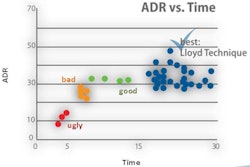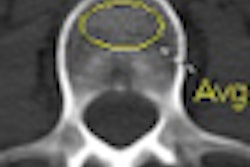Using intensity-modulated radiation therapy (IMRT) instead of conventional radiation therapy to treat anal cancer reduces severe acute skin and gastrointestinal toxicities that many patients experience, according to research presented at the American Society of Clinical Oncology's Gastrointestinal Cancers Symposium.
Outcomes of anal cancer patients participating in two similar Radiation Therapy Oncology Group (RTOG) trials also revealed that both treatments had comparable rates of disease-free survival and overall survival two years after completion.
As a result of these findings, Lisa Kachnic, MD, chair of radiation oncology and professor of radiology at Boston University School of Medicine, reported that Boston Medical Center has adopted IMRT as the standard radiation technique in future RTOG anal cancer trials assessing novel chemotherapy agents in combination with radiation.
In RTOG trial 0529, of which Kachnic was the principal investigator, researchers analyzed the outcome of 52 stage II and stage III patients treated concurrently with IMRT and 5-fluorouracil/mitomycin-C chemotherapy. The IMRT treatments were delivered in 28 to 30 fractions during a median time period of 43 days.
After a median follow-up of 26.7 months, two-year disease-free survival was 77%, and overall survival was 86%. These results were very similar to an arm of the RTOG 9811 clinical trial, in which 325 patients received the same chemotherapy but had conventionally delivered radiation therapy treatments. These patients had a two-year disease-free survival rate of 75% and overall survival of 91%.
Patients in both groups were well balanced with respect to most clinical and pathologic characteristics, Kachnic said. Patients in the IMRT group had a higher percentage of node-positive and advanced disease.
Patients in both studies had nearly identical rates of grade 2 and higher gastrointestinal and genitourinary toxicities combined, gastrointestinal toxicity alone, and skin toxicity within 90 days of treatment. However, patients who had IMRT treatments experienced fewer grade 3 and higher toxicities: 21% compared to 49% for skin toxicities, 20% compared to 35% for gastrointestinal toxicity, and 20% compared to 39% for combined gastrointestinal and genitourinary toxicities.
By Cynthia E. Keen
AuntMinnie.com staff writer
January 27, 2011
Related Reading
Rectal cancer increasing in younger adults: study, August 24, 2010
Pre-op radiation affects sexual function in men with rectal cancer, July 23, 2010
Octreotide not useful against diarrhea from chemoradiation for anorectal cancer, March 25, 2010
Quality of life acceptable after anal cancer -- except for sexual function, February 1, 2010
Pelvic radiotherapy increases risk of pelvic bone fractures, November 23, 2005
Copyright © 2011 AuntMinnie.com




















